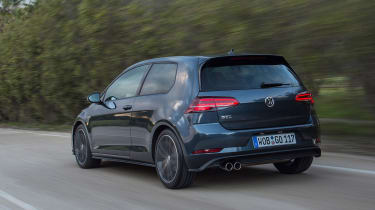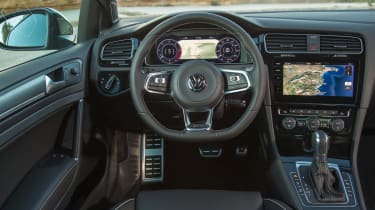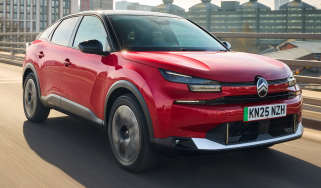New Volkswagen Golf GTD facelift 2017 review
The diesel hot hatch might not be long for this world, but the facelifted VW Golf GTD makes an impressive all-rounder

The concept of a diesel hot hatch is surely on borrowed time, but the Golf GTD makes such a decent fist of it that it’s hard not to find it charming. It’s not exactly cheap but it is capable of delivering fun on a B-road, as well as slogging up and down motorways at a decent lick. The low CO2 emissions could make it an appealing company car choice for the keen driver, too. And all the while, it has the everyday usability of a Golf, making it a strong all-rounder.
British customers love a hot hatchback - but our taxation and company car rules are still weighted towards diesel, so it’s no surprise that the Volkswagen Golf GTD has been one of the most popular variants in the model’s line-up.
Now, though, it’s been updated to bring it in line with the mid-life facelift seen on the rest of the Golf range, which will take this seventh generation model through to 2020.
The powertrain and chassis package on the latest GTD is mostly unchanged - so it still gets a 2.0-litre four-cylinder turbodiesel producing 181bhp and 380Nm of torque. Power drives the front wheels via a six-speed manual gearbox as standard. The DSG option has changed, though, so the dual-clutch transmission tested here is now a seven-speed unit instead of the old six-speeder.
Used - available now

2024 Land Rover
Defender 110
1,226 milesAutomaticDiesel3.0L
Cash £67,960
2022 Skoda
Karoq
1,780 milesAutomaticPetrol1.5L
Cash £18,100
2020 Land Rover
Range Rover Evoque
30,000 milesManualDiesel2.0L
Cash £17,800
2023 Jaguar
I-PACE
35,954 milesAutomaticElectric
Cash £24,200On paper, the numbers are pretty impressive; the three-door GTD (with the DSG gearbox) can crack 0-62mph in 7.4 seconds and a top speed of 143mph - while delivering combined fuel economy of 57.6mpg and CO2 emissions of 129g/km. There’s even a new BlueLine version with smaller (17-inch) wheels, capable of just 122g/km. That’s a healthy efficiency advantage over the petrol-powered GTI - worth noting if you’re considering one of these faster Golfs as your next company car.
The rest of the GTD package falls into line with other facelfited Golfs, getting the same new bumpers and headlights while delivering some of the revised range’s higher-end features as standard. There are new 18-inch alloy wheels, while sports suspension also helps justify the GT badge. You get dual-zone air-con, plus the 12-inch Active Info Display digital dials, sports seats, and LED headlights to match the LED tail-lights that are now fitted to every Golf.
There are significant upgrades to the infotainment system, too, with a Discover Navigation set-up that features an eight-inch touch-screen. It also incorporates Car-Net, which offers real-time information on everything from car park charges to fuel prices at nearby filling stations.
In many ways, we prefer Discover Navigation to the more expensive (optional) Discover Navigation Pro, because while the top spec unit’s 9.2-inch screen in crisper, it loses the shortcut buttons down the sides – as well as the rotary switches that allow you to zoom in and out of the maps.
On the road, the GTD delivers one of the new Golf’s best driving experiences. The new dual-clutch gearbox’s shifts feel a little bit quicker and noticeably smoother than before. That’s a good thing, because the prodigious torque on offer keeps the transmission on its toes, allowing you to make very rapid progress with remarkably little effort.
Should you decide to take control, you can stick the DSG into manual mode and rev the engine out a bit more before shifting up with the steering wheel-mounted paddles. Do this and you’ll hear a fairly gruff engine note; acoustic engineering makes the GTD’s sound about as appealing as a four-cylinder diesel can – but it’s never going to sound as pleasant as a turbocharged petrol motor.
At least it calms down at a cruise, fading to a point where wind noise (from the side mirrors) and tyre roar easily drown it out.
The chassis is more than up to the task, though; you can feel a little more weight over the nose but in general the combination of the stiffer suspension, reduced ride height and the XDS electronic differential system – which brakes individual wheels in corners – means the GTD is quick to respond to inputs in the twisty stuff.
Nicely weighted, accurate steering helps you to place the GTD upon corner entry, and even at speed it’ll stay admirably flat thereafter. And while there is a little bit of trade-off in ride quality, there’s just about enough compliance for it to remain comfortable on a long journey. It’s a nicely judged compromise, in other words - precisely what the sister car to the GTI should offer.













